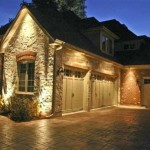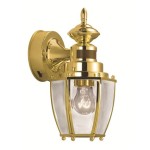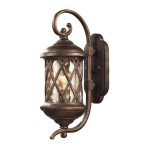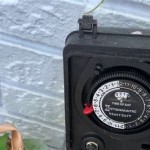Sodium Flood Lights Outdoor: Understanding Application and Functionality
Sodium flood lights are a prominent type of outdoor lighting solution known for their high efficiency and powerful illumination. They are commonly employed in various applications where extensive and reliable lighting is crucial. Understanding their functionality, advantages, disadvantages, and appropriate uses is key to selecting the right outdoor lighting system.
These lights operate on the principle of passing an electric arc through vaporized sodium. This process excites the sodium atoms, causing them to emit light. The resulting light is characterized by a distinctive yellow-orange tint, a factor that significantly influences their practical application.
Two primary types of sodium lamps exist: high-pressure sodium (HPS) and low-pressure sodium (LPS). While both utilize sodium vapor to produce light, they differ significantly in their characteristics and applications. Understanding these differences is essential for informed decision-making.
High-Pressure Sodium (HPS) Flood Lights
High-pressure sodium (HPS) lamps are the more prevalent type of sodium lighting used in outdoor flood lights. They offer a balanced combination of efficiency, light output, and color rendering compared to their low-pressure counterparts. HPS lamps operate at a higher pressure, resulting in a broader spectrum of light and a consequently improved, albeit still limited, color rendering index (CRI).
HPS lamps typically exhibit a CRI in the range of 20-30. While this is not ideal for applications requiring accurate color perception, it is sufficient for many outdoor settings where the primary goal is illumination rather than color fidelity. The yellow-orange light produced by HPS lamps is particularly effective at cutting through fog and haze, making them a valuable asset in areas prone to such conditions.
The efficiency of HPS lamps is a significant advantage. They can produce between 50 and 100 lumens per watt, making them more efficient than incandescent and many halogen lamps. This translates to lower energy consumption and reduced operating costs, particularly in applications where lights are used for extended periods.
HPS flood lights are commonly employed in street lighting, parking lot illumination, security lighting, and industrial applications. Their high light output allows for broad coverage, illuminating large areas effectively. Their robust construction and long lifespan, typically ranging from 12,000 to 24,000 hours, further contribute to their cost-effectiveness.
One drawback of HPS lamps is their warm-up time. It can take several minutes for them to reach full brightness after being switched on. This can be a concern in situations where immediate illumination is required. Furthermore, HPS lamps require a ballast to regulate the current and voltage, which adds to the overall cost and complexity of the system.
The specific ballast is crucial for the proper operation of an HPS lamp. Using an incompatible ballast can lead to lamp failure or even pose a safety hazard. Therefore, it is imperative to ensure that the ballast is correctly matched to the lamp being used.
Despite the relatively low CRI, HPS lamps remain a popular choice for many outdoor applications due to their efficiency, high light output, and ability to penetrate adverse weather conditions. They offer a cost-effective solution for illuminating large areas where color accuracy is not paramount.
Low-Pressure Sodium (LPS) Flood Lights
Low-pressure sodium (LPS) lamps, also known as SOX lamps, represent a different approach to sodium lighting. They operate at a much lower pressure than HPS lamps, resulting in a highly monochromatic yellow light. This monochromatic light has a CRI of virtually zero, rendering colors indistinguishable. Objects illuminated by LPS lamps appear in shades of yellow and grey.
The primary advantage of LPS lamps is their exceptional efficiency. They are the most efficient commercially available light source, producing up to 200 lumens per watt. This makes them ideal for applications where energy conservation is a top priority, even at the expense of color rendering.
Due to their extremely poor color rendering, LPS lamps are typically limited to applications where color discrimination is not necessary. Common uses include roadway lighting in rural areas, tunnels, and situations where maximizing energy efficiency is paramount.
Like HPS lamps, LPS lamps require a ballast to operate. The warm-up time for LPS lamps can also be several minutes. The size of LPS lamps can be considerable, especially for higher wattage models, potentially impacting the fixture design.
The distinctive yellow light of LPS lamps can be advantageous in certain situations. Similar to HPS lamps, it is effective at penetrating fog and haze, improving visibility in adverse weather conditions. However, the lack of color rendering limits their suitability for many applications.
The longevity of LPS lamps is typically very good, often exceeding 18,000 hours. The combination of high efficiency and long lifespan contributes to their overall cost-effectiveness in specific applications. However, the limited application range restricts their widespread adoption.
In recent years, LPS lighting is becoming less common due to the emergence of LED technology, which offers comparable efficiency with significantly better color rendering and control capabilities. While LPS lamps remain a viable option in certain niche applications, their dominance in outdoor lighting is diminishing.
Considerations for Implementing Sodium Flood Lights
Selecting the appropriate type of sodium flood light and implementing it effectively requires careful consideration of several factors. These factors include the specific application, desired light levels, color rendering requirements, energy efficiency goals, and budget constraints.
The first step is to determine the purpose of the lighting. Is it for security, general illumination, or a specific task? The answer to this question will influence the required light levels and the importance of color rendering. For security lighting, high light output is often prioritized, while color rendering is less critical. In contrast, for task lighting, color rendering may be more important to ensure accurate perception.
Next, the size of the area to be illuminated must be considered. Larger areas require higher wattage lamps to achieve the desired light levels. The spacing between the flood lights and their mounting height also play a crucial role in ensuring uniform illumination.
Energy efficiency is a significant consideration in any lighting project. While sodium lamps are generally efficient, HPS lamps offer a better balance of efficiency and color rendering compared to LPS lamps. However, if energy conservation is the absolute top priority and color rendering is irrelevant, LPS lamps may be the preferred choice. The initial cost of the lamps and fixtures must be weighed against the long-term energy savings to determine the most cost-effective solution.
The environmental impact of the lighting system should also be considered. Sodium lamps contain mercury, which is a hazardous material. Proper disposal procedures must be followed at the end of the lamp's life to prevent environmental contamination. Recycling programs are available in many areas to facilitate the safe disposal of sodium lamps.
Finally, the aesthetic impact of the lighting should be considered. The yellow-orange light produced by sodium lamps can be perceived as harsh or unattractive in certain settings. If aesthetics are a concern, alternative lighting technologies, such as LED, may be more suitable. However, LED options may come with a higher initial cost.
Ultimately, the decision of whether to use Sodium flood lights for outdoor applications depends on a careful evaluation of these factors. By considering the specific requirements of the application and weighing the advantages and disadvantages of Sodium based technologies, the correct lighting solution can be identified and implemented effectively.
Proper installation of flood lights is also critical to performance. A qualified electrician can ensure that the wiring is safe, up to code, and adequate for the required load. Similarly, proper aiming of the floodlights will maximize the illuminated area and minimize light trespass, which is light spilling into unwanted areas.
Routine maintenance, such as cleaning the lens to remove any accumulated dirt or debris, will help to preserve the light fixture's output over time. Periodic inspection of the fixture housing and wiring can prevent potential problems before they occur. Replace failing lamps promptly to maintain adequate nighttime illumination, especially for security lighting.
While often an economical and effective solution, considerations for the use of sodium flood lamps should include local regulations regarding light pollution. Some communities restrict or prohibit the use of high intensity light sources for reasons of environmental protection or to maintain the nighttime environment.

High Pressure Sodium Flood Light General Purpose Outdoor Hps

Budget Sodium Floodlight Commercial Lamp Supplies

Jhs40 I China Sodium Flood Light Anhui Sunny Electric Group

400w Sodium Vapor Or Metal Halide Floodlight For Outdoor 200w

Compact 70w Sodium Floodlight C W Lamp Trac Pro70s

Exo Outdoor Lighting Mhs K250s8 Flood Light High Pressure Sodium 250w Broe Gexpro

Sodium 70 Watt Flood Light 240volt 381x268x164mm Black Ip65 0 06m

High Pressure Sodium Outdoor 400w Flood Light

100 Watt Flood Light Fixture Pulse Start Metal Halide 120v 277v Lightusa

Venture 200w Sodium Vapor Metal Halide Floodlight
Related Posts







